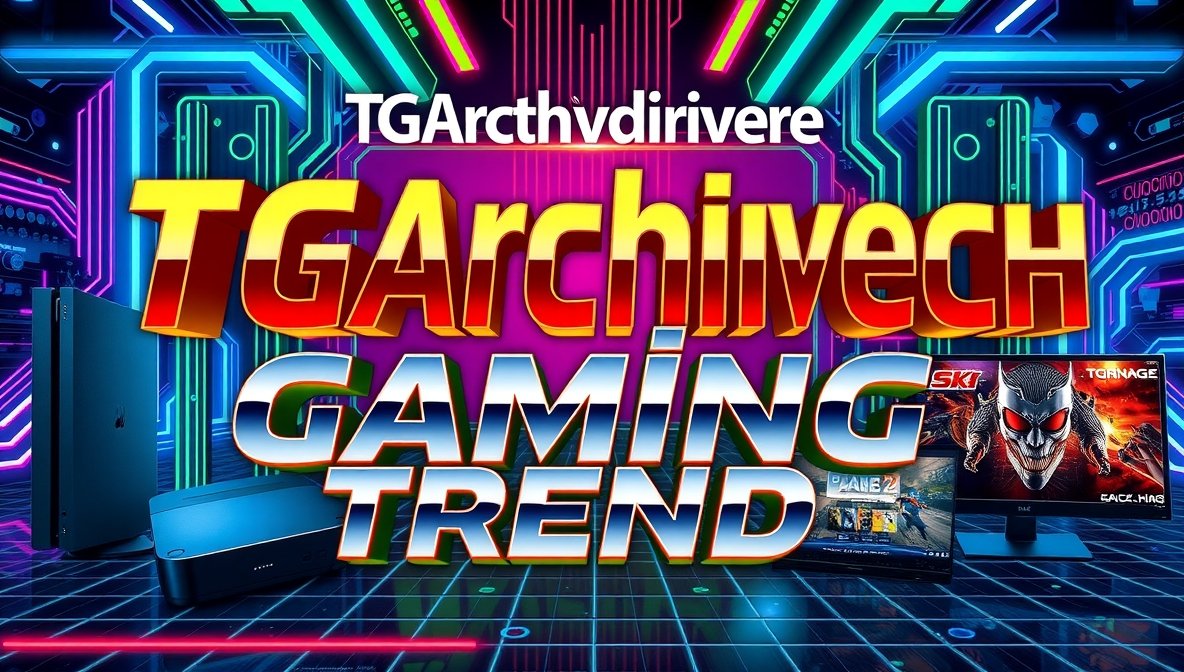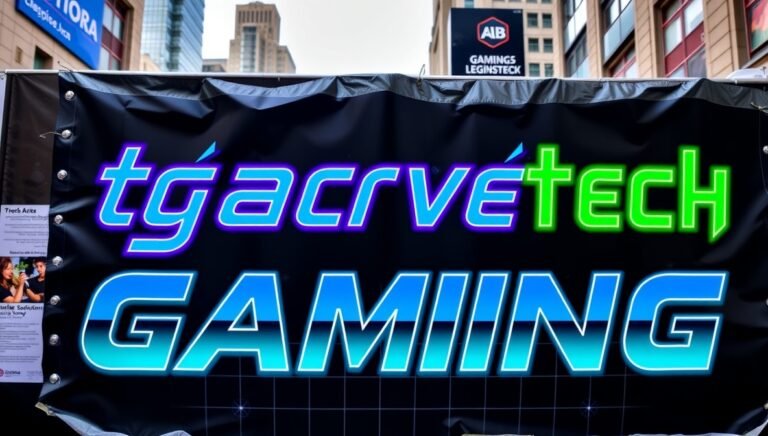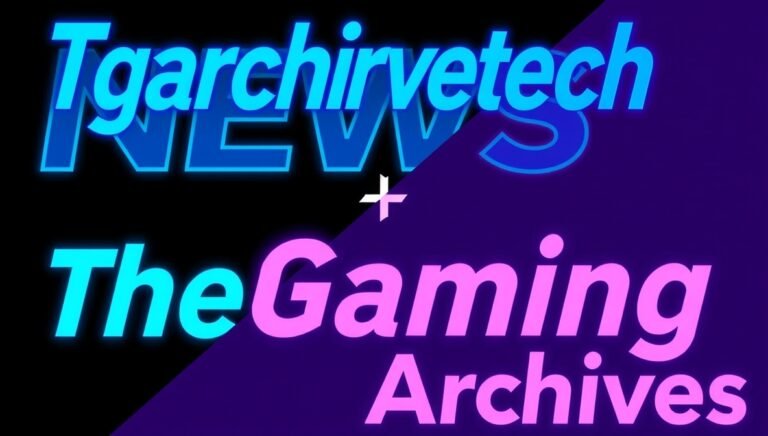Tgarchirvetech Gaming Trends: The Future of Interactive Entertainment
Gaming has evolved tremendously over the last few decades. From simple 8-bit graphics to fully immersive virtual worlds, the gaming industry has consistently pushed technological boundaries. Today, understanding the latest patterns and innovations is crucial for both developers and players. One significant focus is on tgarchirvetech gaming trends, which are shaping the way games are designed, played, and monetized.
Tgarchirvetech gaming trends highlight the shift from traditional gaming formats to experiences that prioritize interactivity, personalization, and social engagement. Players are no longer passive participants; they now influence narratives, environments, and outcomes through their choices and actions. This shift is driven by advances in hardware, software, and online connectivity, transforming gaming into a highly dynamic and interactive ecosystem.
The Rise of Cloud Gaming
Cloud gaming has been one of the most transformative innovations in recent years. Platforms now allow players to stream high-quality games directly from remote servers without the need for expensive hardware. This development has democratized access to gaming, enabling individuals in various parts of the world, including the United States, to enjoy cutting-edge experiences regardless of their device capabilities.
The impact of tgarchirvetech gaming trends on cloud gaming is profound. Developers are optimizing titles for low latency streaming, seamless multiplayer integration, and cross-platform compatibility. This means that whether you are on a laptop, console, or mobile device, your gaming experience remains smooth and immersive.
Cloud gaming also encourages social connectivity. Players can interact, share, and compete in real-time, fostering a sense of community. This trend aligns with the growing demand for games that are not only entertaining but also socially engaging.
Virtual Reality and Augmented Reality
Virtual Reality (VR) and Augmented Reality (AR) have moved from niche technologies to mainstream gaming innovations. VR immerses players in fully digital worlds, while AR overlays digital content onto real-world environments. Tgarchirvetech gaming trends emphasize the integration of these technologies to create more interactive and memorable experiences.
In VR, players can engage in physically active gameplay, simulating real-world actions within virtual spaces. Meanwhile, AR applications transform everyday surroundings into interactive playgrounds, blending physical and digital experiences. These trends are influencing game design, encouraging developers to create content that is both physically engaging and mentally stimulating.
Moreover, the hardware supporting VR and AR is rapidly improving. Lightweight headsets, improved tracking systems, and realistic haptic feedback devices are making immersive experiences more comfortable and accessible. Gamers are increasingly seeking titles that leverage these technological advancements to deliver novel and compelling content.
The Influence of Artificial Intelligence
Artificial Intelligence (AI) is redefining the boundaries of game development. Modern AI algorithms power everything from dynamic storytelling to procedural world generation and adaptive difficulty levels. The influence of tgarchirvetech gaming trends is evident as developers increasingly rely on AI to create intelligent NPCs, realistic behaviors, and personalized player experiences.
AI-driven analytics also provide insights into player behavior, helping studios refine gameplay mechanics, balance challenges, and enhance engagement. This personalized approach ensures that every player’s journey feels unique, increasing both satisfaction and retention.
Furthermore, AI is being used to improve accessibility. Adaptive systems can modify controls, difficulty, and guidance for players with different skill levels or physical abilities. This ensures a more inclusive gaming landscape, aligning with the industry’s commitment to diversity and representation.

Esports and Competitive Gaming
Competitive gaming, or esports, has transformed from a niche activity into a global phenomenon. Tournaments, streaming platforms, and sponsorship deals have created a lucrative ecosystem for players, teams, and organizers. Tgarchirvetech gaming trends are driving this evolution, with developers designing games specifically for competitive play and audience engagement.
Esports is fostering new forms of social interaction, where fans can cheer for teams, participate in community challenges, and even influence game outcomes through live events. The rise of professional leagues and international tournaments also underscores gaming’s potential as a mainstream spectator sport.
Streaming platforms such as Twitch and YouTube Gaming amplify the reach of esports. Gamers can broadcast their gameplay to millions, turning casual players into influencers and content creators. This trend reinforces the symbiotic relationship between gaming development and community engagement.
Mobile Gaming Expansion
Mobile gaming continues to dominate global markets, driven by the proliferation of smartphones and tablets. Tgarchirvetech gaming trends reveal that developers are increasingly prioritizing mobile-first experiences, emphasizing accessibility, convenience, and social interaction.
Mobile games are evolving from casual puzzle or arcade formats to complex strategy, role-playing, and multiplayer titles. Cloud synchronization allows players to switch seamlessly between devices without losing progress, enhancing engagement and retention.
Additionally, mobile platforms are incorporating advanced technologies such as AR, AI, and haptic feedback to deliver rich, immersive experiences. These innovations are redefining what mobile gaming can offer, making it competitive with console and PC experiences.
Social Connectivity and Multiplayer Innovation
Multiplayer games have grown beyond simple cooperative or competitive play. Social connectivity has become a core component of modern gaming, facilitated by online platforms and virtual spaces. Tgarchirvetech gaming trends emphasize social mechanics that encourage collaboration, competition, and community building.
Games now feature integrated communication tools, guilds, clans, and dynamic events that adapt based on player interactions. These innovations transform gaming into a social experience, where relationships, teamwork, and community recognition play a central role.
Moreover, cross-platform play has become increasingly common, breaking down barriers between consoles, PCs, and mobile devices. This inclusivity expands player bases, creates vibrant communities, and supports continuous engagement across different devices.
Blockchain and NFT Integration
Blockchain technology and non-fungible tokens (NFTs) are emerging as controversial yet influential trends in gaming. These technologies offer unique ways to manage in-game assets, ownership, and monetization. Tgarchirvetech gaming trends illustrate how developers experiment with blockchain to enhance player autonomy, secure digital items, and create new revenue models.
In blockchain-enabled games, players can own, trade, and monetize virtual assets with real-world value. NFTs provide verifiable proof of ownership, allowing players to collect rare items or sell them in secondary markets. While these developments have sparked debate about ethics and accessibility, they undeniably push the industry toward innovative economic models.
Moreover, blockchain gaming encourages community-driven content creation. Players can contribute to worlds, quests, or assets, fostering co-creation and deeper engagement. This participatory model represents a significant shift in traditional game development paradigms.
The Role of Streaming and Cloud Platforms
Streaming services for gaming have transformed how players access and experience content. Platforms like Stadia, Xbox Cloud Gaming, and GeForce Now provide instant access to a wide library of titles without hardware limitations. Tgarchirvetech gaming trends emphasize optimizing games for streaming to reach broader audiences.
These platforms also enable global multiplayer interactions, creating interconnected gaming ecosystems. Players can seamlessly join matches, share progress, and participate in events across regions. Streaming technology democratizes gaming, making high-quality experiences available to anyone with a stable internet connection.
Furthermore, cloud platforms facilitate real-time updates, patches, and dynamic content delivery. Developers can adjust game environments on the fly, introducing new challenges, events, or narratives without requiring player intervention. This trend underscores the increasing importance of connectivity and adaptability in modern game design.
Game Accessibility and Inclusivity
Accessibility has become a central concern for developers, reflecting broader social awareness and ethical responsibility. Tgarchirvetech gaming trends highlight efforts to create games that accommodate diverse abilities, ages, and backgrounds. Features such as customizable controls, colorblind modes, and adaptive difficulty ensure that more players can participate fully.
Inclusive storytelling is another dimension of this trend. Modern games feature diverse characters, cultures, and narratives, fostering representation and empathy. These developments not only broaden market reach but also enrich player experiences, making games more engaging and meaningful.
The push for inclusivity extends beyond gameplay to community engagement. Platforms encourage respectful communication, moderation tools, and community guidelines to maintain safe and welcoming spaces for all players.
Emerging Technologies Shaping the Industry
The gaming industry continuously integrates emerging technologies to enhance immersion and engagement. Innovations in AI, VR/AR, cloud computing, and mobile optimization are all part of tgarchirvetech gaming trends. Developers experiment with real-time ray tracing, procedural content generation, and machine learning to deliver unprecedented realism and interactivity.
These technologies also enable adaptive experiences. Games can respond dynamically to player decisions, environmental factors, and real-time analytics, creating personalized and engaging journeys. As technology continues to evolve, the boundaries between virtual and real-world experiences blur, creating novel opportunities for storytelling and gameplay.
The Economics of Modern Gaming
Monetization strategies have diversified alongside technological advancements. Traditional sales models coexist with free-to-play, subscription services, and microtransactions. Tgarchirvetech gaming trends reflect the importance of balancing profitability with player satisfaction, ensuring that monetization enhances rather than hinders experiences.
Subscription models offer players access to extensive game libraries, promoting exploration and sustained engagement. Microtransactions, when implemented ethically, provide cosmetic enhancements or convenience without compromising gameplay balance. Developers now analyze player behavior and engagement patterns to optimize revenue streams responsibly.
The rise of digital distribution has also transformed global markets. Players from regions such as the United States and Asia can access the same titles simultaneously, fostering global communities and competitive ecosystems.
The Role of Content Creation and Streaming
Streaming and content creation have become integral to gaming culture. Influencers, streamers, and YouTubers drive engagement, visibility, and brand loyalty. Tgarchirvetech gaming trends demonstrate the symbiotic relationship between developers and content creators, where gameplay, tutorials, and live events generate excitement and attract new audiences.
Players increasingly consume gaming content as entertainment, participating vicariously through streams and videos. This trend influences game design, encouraging mechanics that are visually engaging, dramatic, and shareable. Developers craft experiences that not only entertain players but also provide compelling content for viewers.
Additionally, social media and streaming platforms facilitate community interaction. Fans can comment, share, and collaborate, creating a participatory culture that strengthens brand loyalty and player investment.

Conclusion
The evolution of gaming is a testament to human creativity, technological innovation, and social interactivity. Tgarchirvetech gaming trends reflect the convergence of advanced technologies, community engagement, and economic innovation. From cloud gaming and VR/AR to AI-driven personalization and blockchain integration, these trends are shaping a vibrant and inclusive industry.
As developers continue to explore new ways to enhance immersion, connectivity, and accessibility, players can expect richer, more dynamic experiences. Gaming has become more than entertainment; it is a cultural phenomenon, a social platform, and a creative canvas. By understanding these trends, both players and developers can navigate the evolving landscape, embracing opportunities and challenges in a constantly changing digital world.
Ultimately, the gaming industry’s future is bright, driven by innovation, community, and imagination. Staying informed about tgarchirvetech gaming trends ensures that players, creators, and stakeholders are prepared to thrive in this exciting and transformative era.




